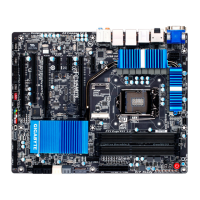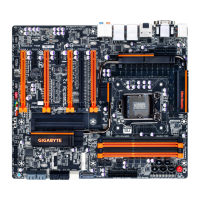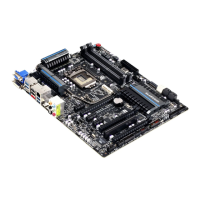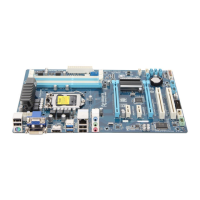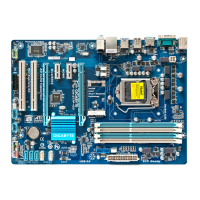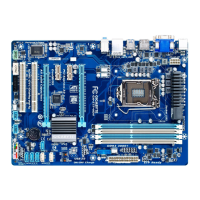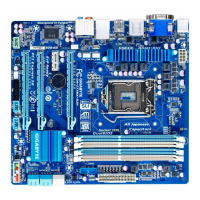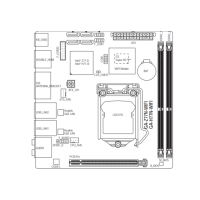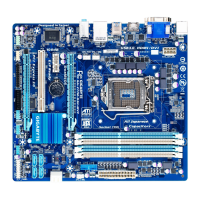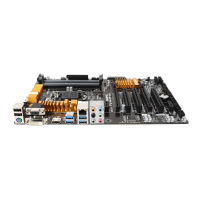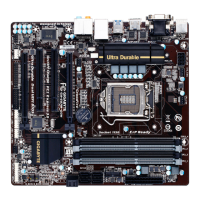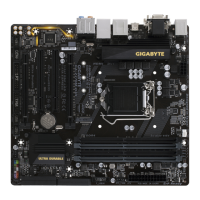- 20 -Hardware Installation
1-7 Back Panel Connectors
•
device and then remove it from the motherboard.
When removing the cable, pull it straight out from the connector. Do not rock it side to side to prevent •
an electrical short inside the cable connector.
PS/2 Keyboard/Mouse Port
Use this port to connect a PS/2 mouse or keyboard.
USB 3.0/2.0 Port
D-Sub Port
The D-Sub port supports a 15-pin D-Sub connector. Connect a monitor that supports D-Sub connection
to this port.
DVI-D Port
(Note)
(the actual resolutions supported depend on the monitor being used). Connect a monitor that supports
DVI-D connection to this port.
Optical S/PDIF Out Connector
This connector provides digital audio out to an external audio system that supports digital optical audio.
Before using this feature, ensure that your audio system provides an optical digital audio in connector.
HDMI Port
uncompressed audio/video signals. The HDMI port is HDCP compliant and supports Dolby TrueHD and
DTS HDMaster Audio formats. It also supports up to 192KHz/24bit 8-channel LPCM audio output. You can
use this port to connect your HDMI-supported monitor. The maximum supported resolution is 1920x1200,
but the actual resolutions supported are dependent on the monitor being used.
In Windows 7, select Start>Control Panel>Hardware and
Sound>Sound>Playback, set Intel(R) Display Audio to the
default playback device.
After installing the HDMI device, make sure to set the default sound playback device to HDMI.
(The item name may differ depending on your operating system. The screenshot below is from
Windows 7.)
(Note) The DVI-D port does not support D-Sub
connection by adapter.
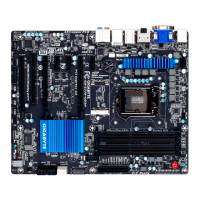
